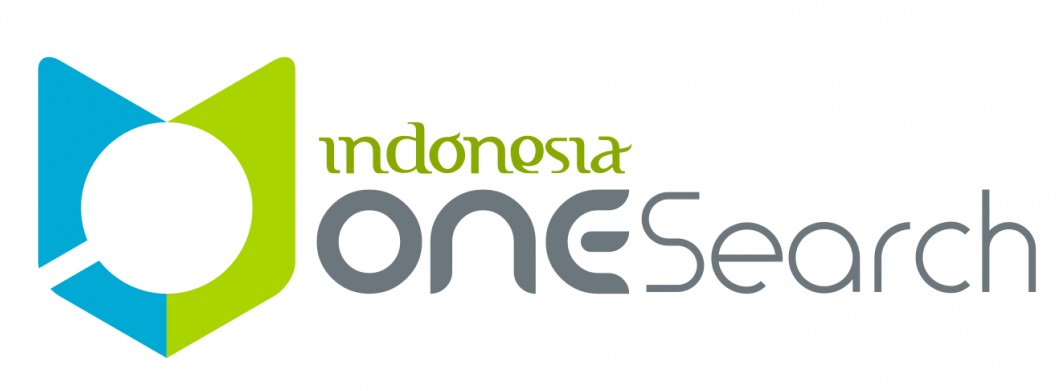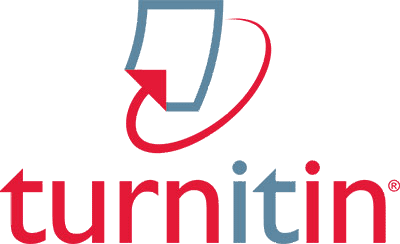Linking Financial Performance to Profit Growth: Empirical Insights from Pharmaceutical Firms in Indonesia
DOI:
https://doi.org/10.24843/EJA.2025.v35.i06.p18Abstract
Profit growth in pharmaceutical companies is regarded as a meaningful indicator of successful financial performance. However, achieving sustained profitability in this sector remains challenging due to structural vulnerabilities, including intense industry competition, a heavy reliance on imported raw materials, and persistent volatility in foreign exchange rates. These external pressures underscore the need for robust financial management strategies to ensure long-term viability. In response to these dynamics, this study investigates the determinants of profit growth among pharmaceutical firms listed on the Indonesia Stock Exchange (IDX) over the 2014–2024 period. Drawing on secondary data sourced from company financial statements, the analysis employs panel data regression to examine the influence of the cash ratio (CR), total asset turnover (TATO), and debt-to-asset ratio (DAR) on profit growth (PG). To complement the regression analysis, the study also applies the Simple Moving Average (SMA) method using a five-year rolling window to forecast future trends in the observed variables. The empirical findings reveal that both CR and TATO exert a positive and statistically significant influence on profit growth, highlighting the importance of liquidity and asset efficiency in enhancing firm profitability. Conversely, DAR does not exhibit a significant effect, suggesting that leverage plays a less critical role in shaping earnings performance within the context of the pharmaceutical industry during the observed period. Forecasting analysis supports these insights. All variables meet the criteria for model feasibility, with Mean Absolute Percentage Error (MAPE) values ranging between 20% and 50%, indicating moderate predictive accuracy. The projections show an upward trend in PG and TATO, while CR remains relatively stable and DAR demonstrates a gradual decline. These trends point to an industry trajectory characterized by improving operational performance, sustained liquidity, and cautious deleveraging. Overall, the results provide relevant empirical evidence on the financial performance drivers in Indonesia’s pharmaceutical sector. They also offer practical implications for corporate managers and stakeholders, emphasizing the strategic value of liquidity and asset utilization in fostering profit sustainability under volatile market conditions.
Keywords: Pharmaceutical Companies; Financial Performance; Profit Growth; Forecasting
References
A. R., A. (2023). Panel data regression techniques.
AFFANDI, F., SUNARKO, B., & Yunanto, A. (2019). The Impact of Cash Ratio, Debt To Equity Ratio, Receivables Turnover, Net Profit Margin, Return On Equity, and Institutional Ownership To Dividend Payout Ratio. JOURNAL OF RESEARCH IN MANAGEMENT, 1. https://doi.org/10.32424/jorim.v1i4.53
Ahmed, F., Rahman, M. U., Rehman, H. M., Imran, M., Dunay, A., & Hossain, M. B. (2024). Corporate capital structure effects on corporate performance pursuing a strategy of innovation in manufacturing companies. Heliyon, 10(3), e24677. https://doi.org/https://doi.org/10.1016/j.heliyon.2024.e24677
Alomi, Y., Aljumah, G., Alohlie, N., Alamri, N., Almadany, M., AlHamdan, B., Alashban, R., Almasoudi, A., & Alanazi, G. (2023). Accounting and Financial in Pharmacy Practice: Income and Cash Flow Statements. International Journal of Pharmacology and Clinical Sciences, 12, 36–48. https://doi.org/10.5530/ijpcs.2023.12.6
Arsyad, M., Haeruddin, S., Muslim, M., & Pelu, M. (2021). The effect of activity ratios, liquidity, and profitability on the dividend payout ratio. Indonesia Accounting Journal, 3, 36. https://doi.org/10.32400/iaj.30119
Baby, A., Mia, M. A., & Pitchay, A. A. (2024). A systematic review of financial performance in the manufacturing industry. Future Business Journal, 10(1), 70. https://doi.org/10.1186/s43093-024-00353-1
Bagus, P., Putra Budiartha, P., Wiedyaningsih, C., Yuniarti, E., Agung, A., & Prithadewi, A. (2023). Forecasting Drug Demand Using The Single Moving Average At Prof. dr. I.G.N.G. Ngoerah Hospital. Majalah Farmaseutik, 19(3), 394–402. https://journal.ugm.ac.id/majalahfarmaseutik/article/view/86207
Brau, J. (2010). Why Do Firms Go Public? The Oxford Handbook of Entrepreneurial Finance. https://doi.org/10.1093/oxfordhb/9780195391244.013.0016
Damayanti, D., Taujiharrahman, D., & Ghozali, I. (2022). Liquidity Ratio Analysis in Measuring Company Financial Health at PT. Indofood CBP Sukses Makmur Tbk. Velocity: Journal of Sharia Finance and Banking, 2, 34–44. https://doi.org/10.28918/velocity.v2i1.5167
Elreedy, D., Atiya, A. F., & Shaheen, S. I. (2021). Novel pricing strategies for revenue maximization and demand learning using an exploration–exploitation framework. Soft Computing, 25(17), 11711–11733. https://doi.org/10.1007/s00500-021-06047-y
Endri, E., Kartika, A., Budiasih, Y., Yuliantini, T., Kasmir, K., & Sari, A. (2020). Determinants of Profit Growth in Food and Beverage Companies in Indonesia. The Journal of Asian Finance, Economics and Business, 7. https://doi.org/10.13106/jafeb.2020.vol7.no12.739
Estrada, M. del R. C., Camarillo, M. E. G., Parraguirre, M. E. S., Castillo, M. E. G., Juárez, E. M., & Gómez, M. J. C. (2020). Evaluation of Several Error Measures Applied to the Sales Forecast System of Chemicals Supply Enterprises. International Journal of Business Administration, 11(4), 39. https://doi.org/10.5430/ijba.v11n4p39
Fahrudin, Z., & Dillak, V. J. (2022). Pengaruh Total Asset Turnover, Operating Profit Margin, Working Capital To Total Asset Dan Debt To Asset Ratio Terhadap Pertumbuhan Laba ( Studi Kasus Pada Perusahaan Sektor Pertanian Yang Terdaftar Di Bursa Efek Indonesia Tahun 2017-2020 ). E-Proceeding of Management, 9(3), 1404–1414.
Gettman, D. (2022). Financial Planning for New Pharmaceutical Care Services in Existing Pharmacies. https://doi.org/10.13140/RG.2.2.18033.19047
Harinurdin, E. (2022). The Influence of Financial Ratio and Company Reputation on Company Stock Prices Financial Sector. In Proceedings (Vol. 83, Issue 1). https://doi.org/10.3390/proceedings2022083047
Hsiao, C. (2014). Analysis of Panel Data. Cambridge University Press. https://doi.org/10.1017/CBO9781139839327
Influence, T. H. E., Return, O. F., Asset, O. N., Moderating, T. H. E., Of, E., Of, P., & Mining, T. H. E. (2024). DEBT-EQUITY RATIO TO STOCK PRICES : 22(2), 586–600.
Ismiyanti, F., & Fuad Armansyah, R. (2010). Motif Go Public, Herding, Ukuran Perusahaan, Dan Underpricing Pada Pasar Modal Indonesia. Jurnal Manajemen Teori Dan Terapan, 3, 20–42. https://doi.org/10.20473/jmtt.v3i1.2391
Kanna, H., Ruma, Z., Anwar, Sahabuddin, R., & Nurman. (2023). Profitability Ratio Analysis to Measure Financial Performance at PT. Bank Sulselbar Makassar Main Branch. International Journal of Social Science, Education, Communication and Economics (SINOMICS JOURNAL), 2, 463–472. https://doi.org/10.54443/sj.v2i3.149
Karim, A., Widyarti, E. T., & Santoso, A. (2023). Effect of current ratio, total asset turnover, and size on profitability: Evidence from Indonesia manufacturing companies. Diponegoro International Journal of Business, 6(1), 57–63. https://doi.org/10.14710/dijb.6.1.2023.57-63
Kasim, Y., Marwah, S., & Nugraha, M. E. (2022). Performance of Mergers and Acquisitions in Go Public Company. Tadulako Social Science and Humaniora Journal, 3(1), 1–12. https://doi.org/10.22487/sochum.v3i1.15733
Kementerian Kesehatan. (2017). Daftar industri farmasi per 30 mei 2017. 1. http://farmalkes.kemkes.go.id/2017/07/daftar-industri-farmasi/
Khoiriah, N. (2022). The Effect of Current Ratio, Debt to Equity Ratio and Total Asset Turnover on Return on Equity (Manufacturing Industry Companies in the Consumer Goods Sector Food and Beverage Sub-sector Listed on the Indonesia Stock Exchange for the Period 2013-2020). Budapest International Research and Critics Institute (BIRCI-Journal): Humanities and Social Sciences, Vol 5, No 2 (2022): Budapest International Research and Critics Institute May, 10282–10292. https://bircu-journal.com/index.php/birci/article/view/4827/pdf
Kolade, O. J. (2019). Demand Forecasting and Measuring Forecast Accuracy in a Pharmacy. Economica, 15(3), 157–169.
Kovalchuk, T., & Verhun, A. (2020). Improvement Of The Method Of Analysis Of Asset Management Efficiency. Baltic Journal of Economic Studies, 5, 61. https://doi.org/10.30525/2256-0742/2019-5-5-61-66
Mamo, W. B. (2023). Growth Determinants of Micro and Small Enterprises (MSEs): Evidence from Entrepreneurs in the Eastern Region of Ethiopia. Journal of the Knowledge Economy, 14(1), 138–160. https://doi.org/10.1007/s13132-021-00859-x
Manajemen, J. I., Bisnis, D., Prasetio, A. E., Salma, U., Azizah, A., & Daulay, Y. (2021). The Effect Of Total Assets Turnover, Current Ratio And Financial Technology On The Profitability Of Banking Companies In Indonesia. Journal Ilmiah Management and Business, 7(2), 253–262.
Martani, & Herdina Dwi Aprilya. (2023). Analisis Kinerja Keuangan Pada Perusahaan Farmasi yang Terdaftar di Bursa Efek Indonesia (BEI) Sebelum dan Selama Pandemi Covid-19. Jurnal Ekonomi Dan Manajemen, 2(2 SE-Articles), 159–166. https://journal.admi.or.id/index.php/JEKMA/article/view/809
Maulidya, E., Sukoco, A., Suyono, J., & Elisabeth, D. (2019). Analysis of Financial Performance Based on Financial Ratio and Economic Value Added. IJIEEB : International Journal of Integrated Education, Engineering and Business, 2, 115–122. https://doi.org/10.29138/ijieeb.v2i2.959
Mointi, R., Kurnia, A., & Hasmi. (2021). Perencanaan laba perusahaan farmasi go public pharmacy company profit planning go public. Economy Deposit Journal (E-DJ), 3(1), 28–39.
Moosivand, A., Rajabzadeh Ghatari, A., & Rasekh, H. R. (2019). Supply Chain Challenges in Pharmaceutical Manufacturing Companies: Using Qualitative System Dynamics Methodology. Iranian Journal of Pharmaceutical Research : IJPR, 18(2), 1103–1116. https://doi.org/10.22037/ijpr.2019.2389
Mufidah, M., Febrianti, I., & Adisetiawan, R. (2024). Pengaruh Cash Ratio dan Pertumbuhan Laba Terhadap Nilai Perusahaan dengan Ukuran Perusahaan sebagai Variabel Moderasi. Jurnal Ilmiah Universitas Batanghari Jambi, 24(1), 871. https://doi.org/10.33087/jiubj.v24i1.5058
Nany, M., Prasetyaningrum, M., Pratama, D., & Triana, Y. (2023). Manajemen Laba dan Kinerja Operasional Sebelum dan Sesudah IPO Bursa Efek Indonesia. Sosio E-Kons, 15, 167. https://doi.org/10.30998/sosioekons.v15i2.15757
Oyemaja, A. (2024). Moving Averages in Time Series Analysis: Understanding Trends & Forecasting.
Pardosi, D., & Siagian, H. (2021). Debt to Assets Ratio and Management Asset on Financial Performance: an Evidence of Chemical Companies in Indonesia Stock Exchange. Ekonomis: Journal of Economics and Business, 5, 417. https://doi.org/10.33087/ekonomis.v5i2.387
Patin, J.-C., Rahman, M., & Mustafa, M. (2020). Impact of Total Asset Turnover Ratios on Equity Returns: Dynamic Panel Data Analyses. Journal of Accounting, Business and Management (JABM), 27, 19. https://doi.org/10.31966/jabminternational.v27i1.559
Rahmah Fadillah, I., Nadiyah, N., Rohmah, L., Haryadi, D., & Wahyudi, W. (2024). Profitability ratio analysis to assess the financial performance. International Journal of Applied Finance and Business Studies, 11(4 SE-Articles), 964–969. https://doi.org/10.35335/ijafibs.v11i4.243
Rajagukguk, J., & Siagian, H. (2021). The Effect of Liquidity and Total Asset Turnover on Profitability: Research Study n Pharmaceutical Companies in Indonesia Stock Exchange. Ekonomis: Journal of Economics and Business, 5, 444. https://doi.org/10.33087/ekonomis.v5i2.400
Ramayanti, R., Rachmawati, N., & Andriana, Y. (2022). Level of Urgency for the Application of Integrated Financial and Tax Reports for MSME Actors: A Cost and Benefit Analysis Approach. International Journal of Research in Business and Social Science (2147- 4478), 11, 377–387. https://doi.org/10.20525/ijrbs.v11i5.1899
Raudys, A., & PABARŠKAITĖ, Ž. (2018). Optimising the smoothness and accuracy of moving average for stock price data. Technological and Economic Development of Economy, 24, 984–1003. https://doi.org/10.3846/20294913.2016.1216906
Refriansyah, E., Rezky, R., Eko, P., Utomo, P., Informasi, S., & Jambi, U. (2024). 3 1,2,3. 16(1), 105–112.
Report, C., Dasopang, E. S., Fauziah, I., Hasanah, F., Siahaan, D. N., Yunisma, D., & Lubis, R. (2022). Pharmacy Performance Based on Financial Perspective Before and During COVID-19 Pandemic : A Case Study. Pharmaceutical Sciences and Research, 9(2), 102–107. https://doi.org/10.7454/psr.v9i2.1221
Rutkowska-Miczka, A. (2015). The Influence of Profitability Ratios and Company Size on Profitability and Investment Risk in the Capital Market. Folia Oeconomica Stetinensia, 15. https://doi.org/10.1515/foli-2015-0025
Saleh, B. (2023). The Effect of Financial Ratios, Firm Size, and Cash Flows from Operating Activities on Earnings per Share. International Journal of Professional Business Review, 8, e03317. https://doi.org/10.26668/businessreview/2023.v8i6.3317
Sari, N. N. P., & Yousida, I. (2022). Pengaruh Likuidittas Dan Profitabilitas Dan Ukuran Perusahaan Terhadap Harga Saham Pada Perusahaan Farmasi Yang Terdaftar Di Bursa Efek Indonesia. Jurnal Ilmiah Ekonomi Bisnis, 8(2), 209–220. http://ejournal.stiepancasetia.ac.id/index.php/jiebJilid
Seretidou, D., Billios, D., & Stavropoulos, A. (2025). Integrative Analysis of Traditional and Cash Flow Financial Ratios: Insights from a Systematic Comparative Review. In Risks (Vol. 13, Issue 4). https://doi.org/10.3390/risks13040062
Sestanj-Peric, T., Keglević Kozjak, S., & Kovšca, V. (2019). FINANCIAL RATIOS BENCHMARKS - AVERAGE OF INDUSTRY OR SOME OTHER MEASURE?
Sulistio, T. (n.d.). P Anduan Ipo ( G O P Ublic ). 1–12.
Sunaryo, D., & Lestari, E. P. (2021). The Effect of Debt to Asset Ratio and Debt to Equity Ratio Against Return on Assets. 8(April), 9–13. https://doi.org/10.4108/eai.18-11-2020.2311805
Virandani, & Sofyan, M. (2023). The Effect of Cash Ratio, Debt to Equity Ratio, Total Asset Turnover, Return on Asset and a Firm Size on Dividend Payout Ratio at Bank Persero Listed in IDX High Dividend 20 Period 2018-2021. Sinergi International Journal of Management and Business, 1(1 SE-Articles), 17–43. https://doi.org/10.61194/ijmb.v1i1.2
Xu, D., Lee, S. H., & Eom, T. (2007). Introduction to Panel Data Analysis. https://doi.org/10.1201/9781420013276.ch32
Yandes, J., & Nugroho, S. (2023). Reviewing Internal Variables on the Level of Underpricing of IPO Shares (Observation of the Company Go Public on IDX 2021-2022). Ilomata International Journal of Tax and Accounting, 4, 311–323. https://doi.org/10.52728/ijtc.v4i2.734
Zhang, L., Wang, L., Ji, Y., & Pan, Z. (2025). Forecasting Gold Volatility in an Uncertain Environment: The Roles of Large and Small Shock Sizes. Journal of Forecasting, n/a(n/a). https://doi.org/https://doi.org/10.1002/for.3247
Downloads
Published
How to Cite
Issue
Section
License
Copyright (c) 2025 E-Jurnal Akuntansi

This work is licensed under a Creative Commons Attribution-ShareAlike 4.0 International License.

This work is licensed under a Creative Commons Attribution-ShareAlike 4.0 International License.













